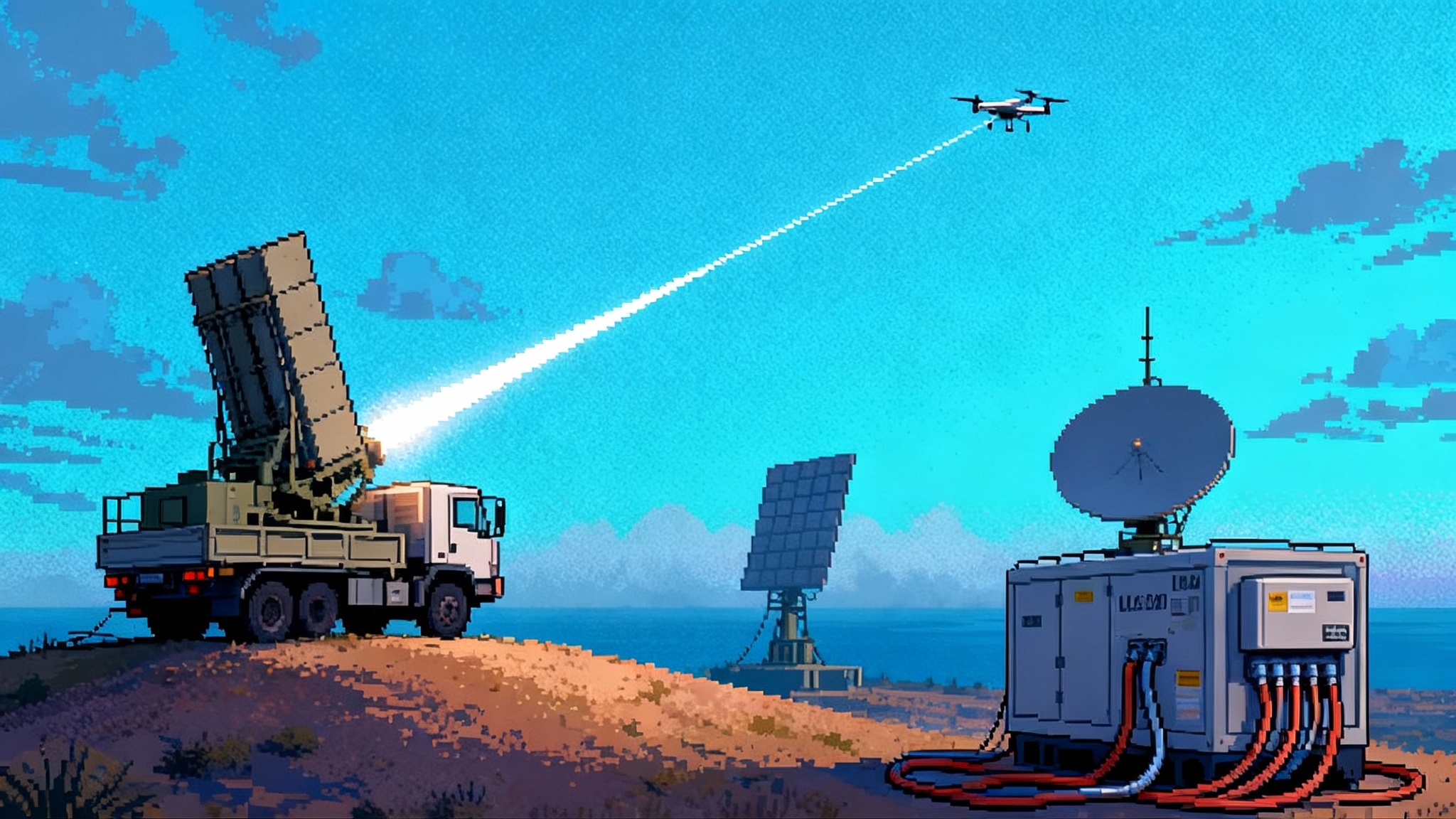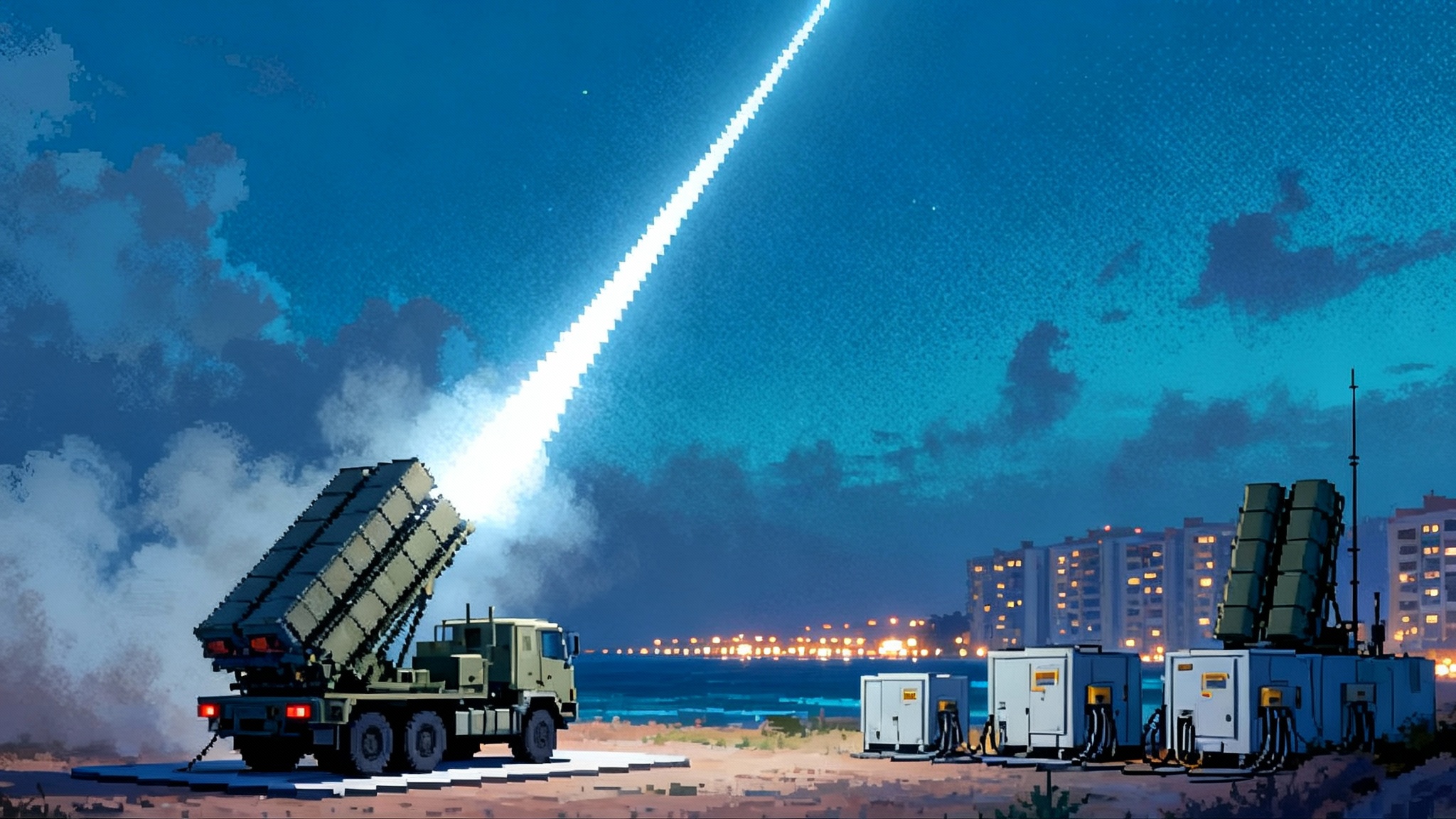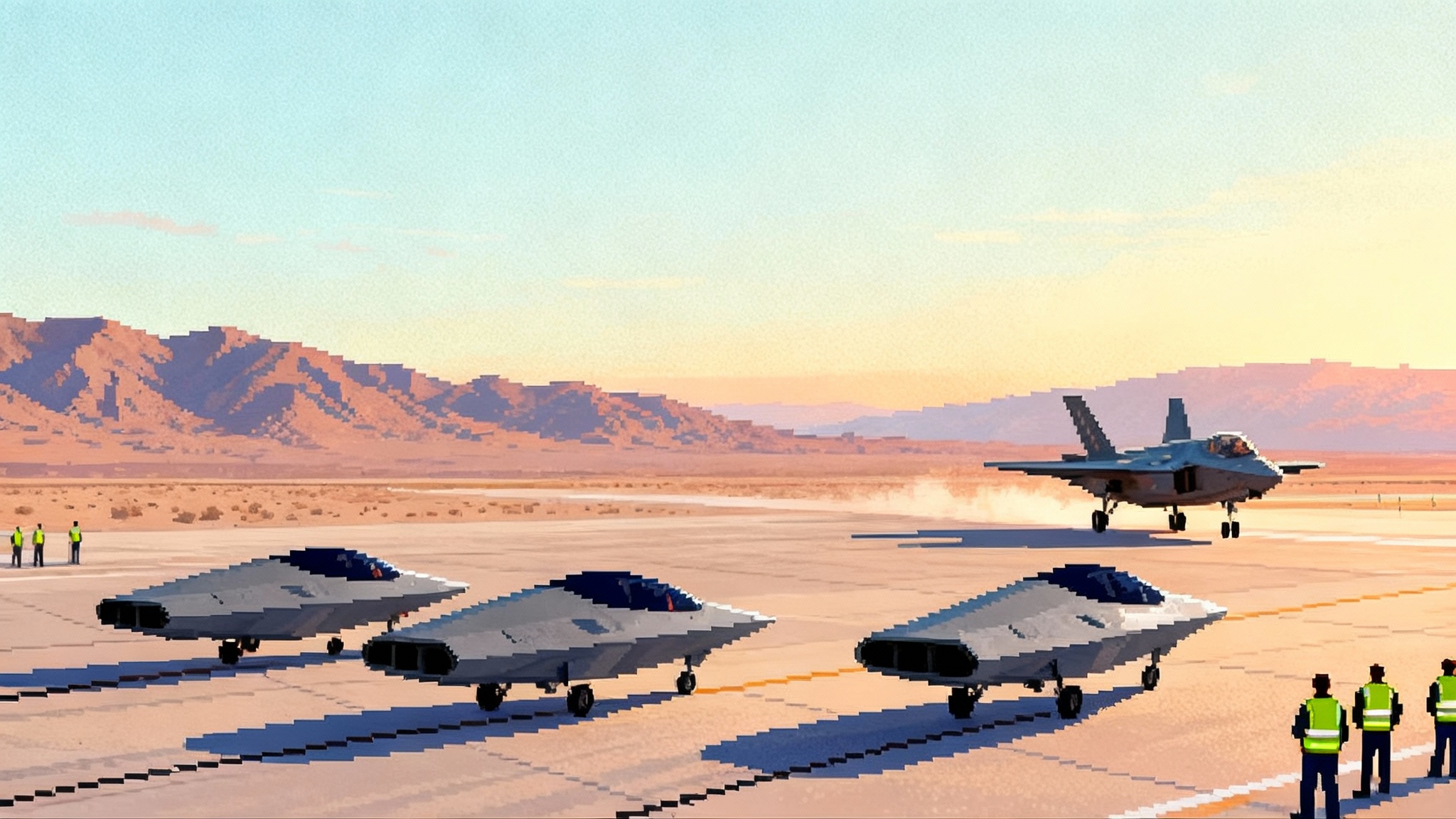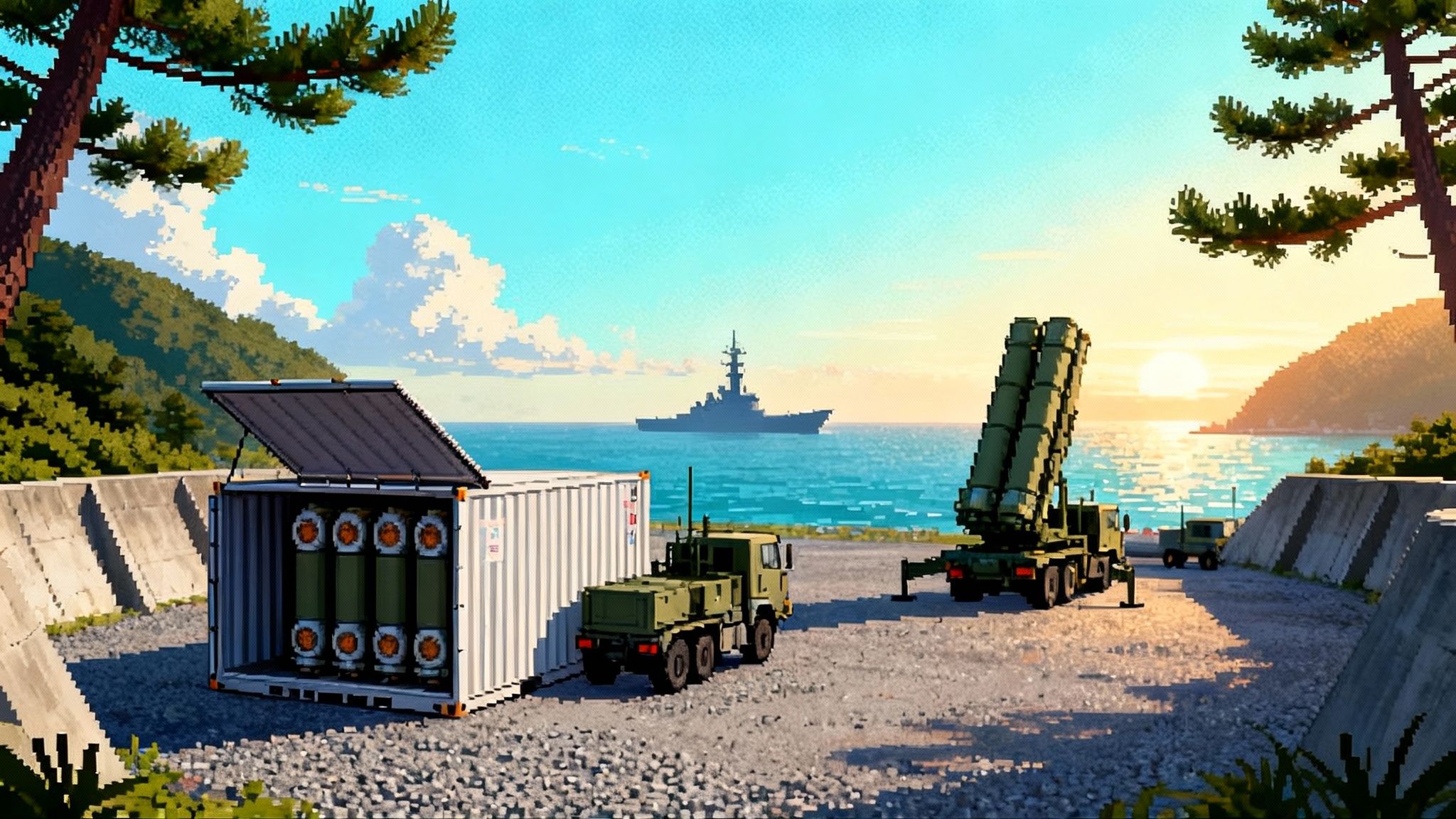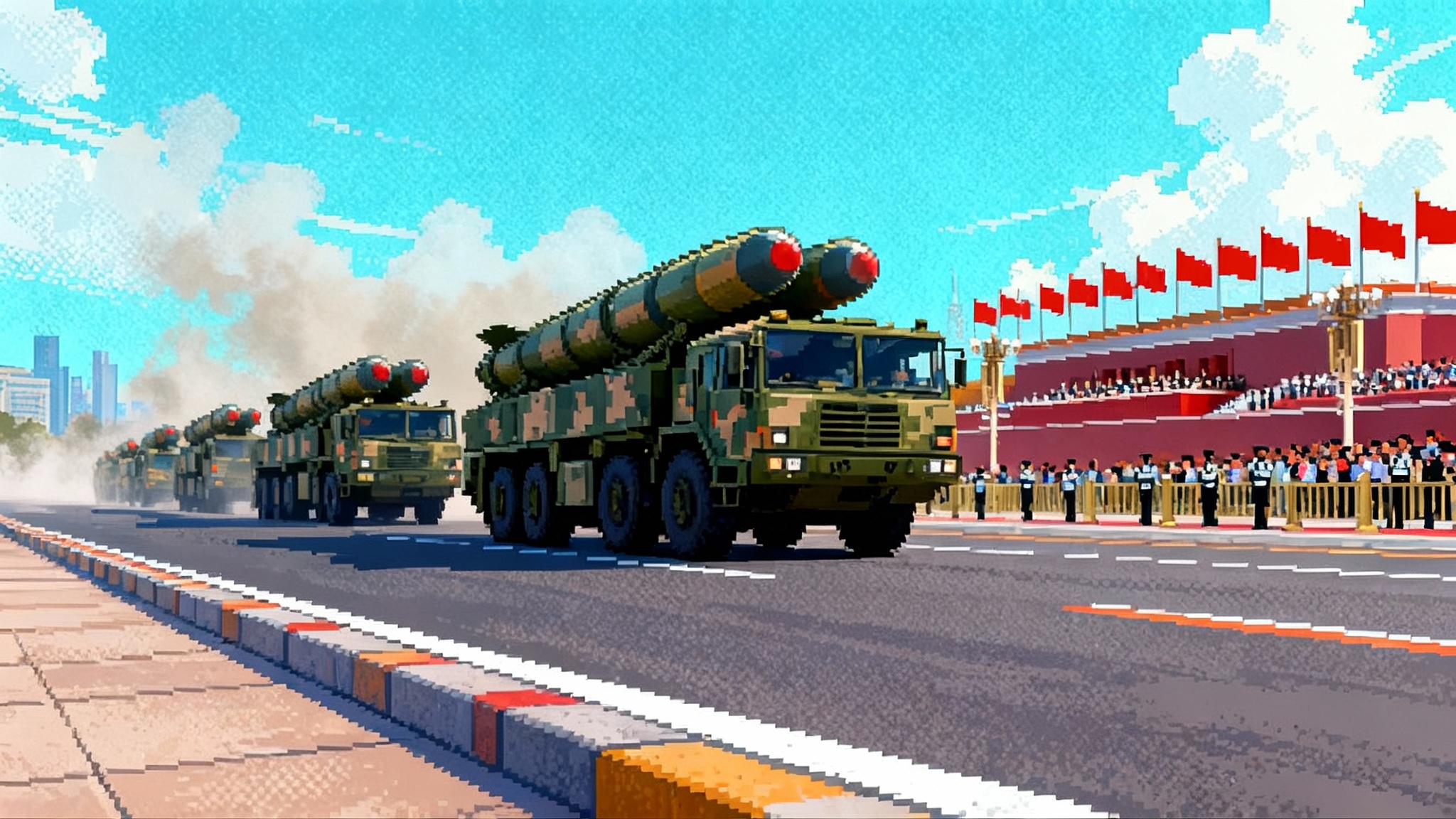Golden Dome shifts from slogan to system: the real tradeoffs
Washington just turned Golden Dome from talking point into a program with dates, orbits, and dollars. We map the physics, constellation math, budget risks, and what is actually realistic by 2029.

September’s pivot from talk to tasking
The Golden Dome missile defense shield stopped being just a line in a stump speech this month and became a program with dates, names, and a skeleton architecture. On September 17, 2025, the Pentagon received its first official architecture briefing, with a full implementation plan due in mid November, as reported by Reuters on Pentagon briefing. Slides shown to lawmakers outline four layers, one in space and three on the ground, and even a notional map of 11 short range missile batteries across the continental United States, Alaska, and Hawaii. The next 90 days will turn this from a concept into line items, schedules, and contracts.
What Golden Dome actually includes
Golden Dome is pitched as a layered defense. Think of it as four interlocking nets:
- Space layer of satellites to see and track launches quickly, discriminate real warheads from decoys during spaceflight, and pass fire control quality data to shooters. This builds on the Pentagon’s proliferated LEO work such as the SDA Tranche 1 LEO mesh.
- Long range ground interceptors for midcourse shots against intercontinental ballistic missiles.
- Regional layer to swat cruise missiles and shorter range ballistic threats, including mobile batteries positioned near likely targets.
- Directed energy and experimental components for terminal defense in high traffic areas, a space where programs like Iron Beam laser defenses hint at future economics.
The space layer is the decisive change. Sensors in space are less blocked by weather and horizon limits. They can stare continuously, which is critical for tracking dim, fast objects like hypersonic glide vehicles as they skip through the upper atmosphere. The leap is the possibility of space based interceptors, not just sensors. That is where the physics, the constellation size, and the money get hard.
Space sensors versus space interceptors
It is easier to put a thermal camera in orbit than to put a missile there. Sensors are smaller, sip power, and can be built in large batches. Their job is to detect and track. Interceptors must carry propulsion, guidance, and a kill vehicle, maintain readiness for years, and sprint on cue.
- Space sensors pros: persistent global coverage, rapid detection, high revisit, easier to proliferate across many small satellites. Cons: they only see; you still need shooters and a tight command loop.
- Space interceptors pros: the chance to kill in boost phase or early midcourse, before an adversary deploys decoys or maneuvers. Cons: each unit is heavy and expensive, on orbit logistics are hard, and you need many to be in the right place at the right time.
With sensors only, Golden Dome improves everything the United States already does: cue ground and sea shooters faster, cut the timeline between first light and first shot, and raise the probability of kill with more accurate tracks. With interceptors in space, Golden Dome would cross a threshold from watchful guardian to active orbital defender. That change brings unique rules of engagement, autonomy, and escalation questions.
Boost phase versus midcourse: the physics that matter
Missiles fly in three broad phases. Boost is the first minute or two as the rocket climbs and burns bright. Midcourse is the long coast through space that can last tens of minutes for an intercontinental shot. Terminal is the last minute or so as the warhead reenters.
- Boost phase looks attractive because the target is hot, bright, and slow compared to midcourse, and debris would fall mostly on the attacker’s territory. The catch is geometry. Boost is brief, and the interceptor must be close. From orbit, that means having a shooter above or near every likely launch area most of the time. You also need to shoot through the atmosphere at a stressed target while it is accelerating. The window is measured in tens of seconds once you detect, classify, decide, and commit.
- Midcourse interception gives you more time and less drag, but the problem is clutter. Warheads can be accompanied by decoys and chaff, and everything is cold against a cold background. Discrimination is the name of the game. Space sensors that can hand off clean tracks to interceptors on the ground or at sea are a huge advantage here. Space based interceptors could try to kill early in midcourse, but that again increases the need for a dense constellation of shooters.
A practical Golden Dome likely tries both. It leans on a proliferated space sensing mesh to enable more reliable midcourse kills with upgraded ground interceptors, and it funds a narrow pathfinder for on orbit interception to see what is actually possible before scaling.
Constellation size and launch cadence
Coverage is a math problem. To hold boost phase launch areas at risk with shooters in orbit, you need enough satellites so that at least one is in firing geometry at any given time. The shorter the boost window and the longer the interceptor’s flyout time, the more platforms you need. For midcourse custody, you want overlapping sensors looking from different angles to pick a real warhead out of a crowd. That pushes you toward dozens to hundreds of satellites in multiple orbital planes.
Launch cadence is no longer the bottleneck it once was. The United States now has multiple heavy and medium lift rockets able to fly frequently, and rideshare options for small satellites are routine. But cadence is still finite. If Golden Dome tries to field a few hundred spacecraft by the late 2020s, the program must place monthly or even weekly orders, lock in fairings and pads, and accept that early batches will fly with incremental capability while later batches catch up.
There is an uncomfortable constraint that rarely makes the podium. Even if you can launch many satellites quickly, you also need to integrate seekers, cryocoolers, lasercom terminals, and radiation hardened computing across the fleet. These are not infinite supply chain items. A program that tries to scale too fast can choke itself on very specific parts.
Command, autonomy, and who decides to shoot
Time to decision is a first class requirement. If your boost phase window is under two minutes, your kill chain cannot wait for a long loop through human control. That pushes command authority and autonomy closer to the edge. Expect Golden Dome to experiment with three approaches at once:
- On orbit processing to turn raw sensor data into tracks without downlink delays.
- Pre authorized, constrained autonomy that allows certain classes of shots when confidence, geometry, and collateral risk thresholds are met.
- Human on the loop for the tightest timelines, with the ability to abort if new information arrives. The Pentagon’s broader autonomy push, reflected in programs like USAF autonomous wingmen lessons, offers useful doctrine and test paths.
This is not science fiction. It is a policy choice. The engineering task is to bound errors, reject spoofing and jamming, and prove that false positives can be kept at or near zero under stress. That means redundant sensing modalities, encrypted crosslinks, and live fire tests at operational velocities. It also means a sober discussion about what counts as acceptable risk when the shooter is in orbit.
Debris, ASAT risk, and escalation
Every kinetic intercept creates fragments. In space those fragments can last for years, depending on altitude. If Golden Dome places interceptors in low Earth orbit and executes boost or early midcourse shots, some debris will reenter quickly, but not all. There is a reason missile defense agencies have preferred hit to kill tests in controlled corridors and why there is growing interest in directed energy or non fragmenting kill mechanisms.
There is also the adversary vote. Space based weapons invite counterspace weapons. Jammers, dazzling lasers, co orbital chasers, and direct ascent anti satellite missiles are all on the table. A space based interceptor fleet becomes a target set. Golden Dome’s designers will try to mitigate this with proliferation, rapid replacement, and maneuverable buses. But survivability under attack is a requirement, not a slide.
The escalation ladder is real. An intercept that drops debris over a third country, a preemptive shot against a missile that turns out to be a space launch, or a mistaken classification under spoofing pressure are all scenarios planners must model now, not after deployment.
Budgets, numbers, and the industrial base
The administration’s headline number is roughly 175 billion dollars, with early talk of a 25 billion dollar down payment. Independent cost work paints a wider picture. In May, the Congressional Budget Office updated its space based interceptor work. Lower launch costs help, but the mass of the problem sits with the interceptor vehicles themselves and the need for many of them to close geometry gaps. Depending on architecture, the 20 year cost just for a space interceptor layer ranged from about 161 billion to 542 billion dollars. See CBO analysis of space interceptors.
The industrial base can do pieces of this today. Proliferated sensing constellations are routine. High rate satellite buses exist. Advanced seekers, cryogenic sensors, space qualified propulsion, and Ka or optical crosslinks are in production. What does not exist yet is a proven, maintainable, space based hit to kill interceptor that can loiter for years, then wake up and perform a closing velocity engagement on demand. That will require new test ranges, new safety doctrines, and a series of build one, break one flight campaigns that absorb failure and keep learning.
Money will flow to specific corners of the economy. Solid rocket motors and divert thrusters. Infrared detector fabs and cryocoolers. Radiation hardened processors and high speed networking. Autonomous flight software, verification, and digital engineering tool chains. And, of course, launch services and on orbit logistics. If Golden Dome surges, it will drag workforce and supplier capacity with it, and that may crowd other space programs unless Congress grows the overall pie.
The next 90 days: what to watch
The calendar is short and specific.
- Mid November implementation plan. This is the first reality check. It should name the baseline architecture, spell out the first tranche of space sensors, define the test campaign for on orbit intercept demonstrations, and map the initial ground deployments. It will also lock candidate orbits and the first contracting actions.
- Fiscal year 2026 budget moves. Expect late fall skirmishes over reprogrammings and marks as the Department tries to fund early long lead buys. Watch for radar upgrades and ground interceptor modernization tied into the Golden Dome umbrella.
- Industry RFIs and draft RFPs. These will hint at how many satellites are in the first batch, what payload mix they carry, and whether the program pursues a single prime or a split between bus, payload, and integration.
- Test range announcements. If the Pentagon wants an on orbit intercept demonstration in 2027 or 2028, it must start reserving corridors and coordinating with civil space now.
Each of these milestones tells you whether the plan is a sprint to a limited capability or an attempt to boil the ocean.
What can be real by the late 2020s
There is a wide gap between political promises and physics. Here is a sober read of what the United States could reasonably field by 2028 or 2029 if the current momentum holds.
- A denser space sensing layer with global persistent custody of ballistic launches and improved tracking of hypersonic glide vehicles. This is the surest bet. It extends work already in motion and delivers immediate value to existing ground and sea based interceptors.
- Integrated command and control that shortens the find fix track target engage assess loop. Expect crosslinks between satellites, automated track fusion, and pushbutton tasking to shooters. Less cinematic, more decisive.
- Upgraded ground interceptors and regional batteries. Think more responsive next generation interceptors, refreshed radar coverage, and mobile short range units around critical infrastructure.
- A narrow space intercept demonstration path. The United States can likely fly one or more on orbit experiments that test guidance, closing velocity, and endgame discrimination against cooperative targets. Turning that into an operational, on call space interceptor layer by 2029 is unlikely. The mass of vehicles, the logistics of keeping them ready, and the policy framework for their use will take longer.
In short, the space sensors are near certain, the ground layers are probable, and the space interceptors are the long pole in the tent.
The trade we are actually making
Golden Dome is not a binary choice between perfect safety and nothing. It is a set of trades. More satellites mean better custody but higher costs and a bigger target set in orbit. Space interceptors promise early kills but require unprecedented autonomy and create new debris and escalation risks. Focusing on midcourse with better sensing is cheaper and safer, but it accepts that some threats will leak into terminal defenses.
If Washington keeps the program focused on the minimal set that raises the probability of kill against the most likely threats, the late 2020s can deliver something real. If it tries to skip steps and field a full space interceptor web at scale on a compressed timeline, the risk is a lot of money spent on PowerPoint.
Bottom line
September turned Golden Dome from a slogan into a system with dates and a rough design. The next 90 days will lock a plan that industry can price and Congress can vote on. The physics reward a patient, layered approach that leads with space sensors, modernized ground shooters, and careful on orbit experiments. That path is the one most likely to put real capability on watch by the end of the decade.
